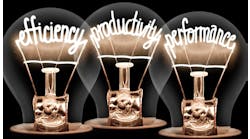By Ray Grady, president and CEO of Conexiom
It’s always interesting to look at the incoming workforce to learn what motivates them. At Conexiom, we recently commissioned a survey that examines the future of manufacturing and distribution, what various generations—primarily Gen Z—think of the sectors and what can be done to ensure manufacturing and distribution (M&D) keep attracting young talent going forward.
The inspiration for the survey may seem obvious. The change that was thrust upon the globe as we, quite literally, went into pandemic mode. The onset of the pandemic brought with it a domino effect of changes—working from home, inventory shortages, supply chain issues, people resigning from their jobs to find more fulfillment, etc.
The world changed and so did the manufacturing and distribution sectors; that shift required a deeper look to find out what could be addressed to mitigate its negative effects.
At first glance, the outlook is sobering. The M&D sectors are expected to face an employment shortfall of two and a half million jobs by 2028. And that number has the potential to double by 2030.
From our customers' perspective, hiring continues to be a challenge. Be it the IT team that is internally resourced, or even the mindshare from the functional side, and folks in the call center that are working with customers. We’ve seen labor challenges across the spectrum from our customers large and small.
One of the obvious first steps is to look forward to the upcoming generations poised to take over the positions that Boomers and Gen X are leaving behind. Our survey specifically honed in on what rising generations like Gen Z expect from their careers and what manufacturers must change to appeal to these new workers. It’s not a “nice to have” in finding out what’s important to Gen Z. It’s critical to the successful future of manufacturing facilities to try to understand what makes Gen Z tick, especially considering how the current workforce is largely made up of Millennials, but by 2025, projections are that 27% of the workforce will be Gen Z.
Our survey was created to capture the career interests and workplace expectations of Gen Z while also exploring how the pandemic and our current economic landscape are shaping the modern notion of a career. Our goal was to compare what Gen Z wants with what the manufacturing sector currently offers and gain an understanding of what will be needed to evolve and grow and make room for Gen Z. The findings range from salary requirements to technological expectations on the job and more.
There’s a lot of insight to be gleaned from the survey results, including who will be investing in advanced technology (automating processes where it makes sense), the impact that will have on hiring, and even the main reason that manufacturing and distribution businesses feel Gen Z would want to work for them.
Here’s a glimpse at a couple of the survey findings:
- More than 40% of manufacturers and distributors plan on investing in technology to make jobs more attractive over the next five years.
- 85% of manufacturing and distribution industry leaders indicated that they are worried about filling jobs in the next five years. Out of those respondents, 60% stated it is because it is increasingly more difficult to hire in the manufacturing industry. 40% said this was because they are seeing a lot of people retire and voluntarily leave the workforce.
- 77% of business leaders in manufacturing feel positively (or extremely positively) about Gen Z entering the workforce, compared with 62% of business leaders in distribution feeling similarly.
I would imagine the decision-makers are hopeful to bring in new talent who are digital natives, who know nothing but automation, digital, and aren’t afraid of concepts like artificial intelligence. Leaders can enable those beginners to apply their ideas to businesses that could be a hundred years old. I, personally, want to surround myself and Conexiom with younger thinking.
It's been an interesting two and a half years. At the beginning of the pandemic, I heard that customers had to shed labor. They needed different strategies to handle changing parts of their businesses. That quickly transformed to "business is booming and I can’t hire enough people to support the needs of my customers.”
We've seen an ebb and flow of reduced cost, and now we’re getting back into a recession. From my perspective, the last two years have given executives opportunities that, regardless of the state of the macro-economy today, are automating and freeing up the right labor to do the right thing for their customers. Our customers have seen a huge return on automation, and in turn, have had the ability to take market share and grow.


